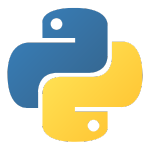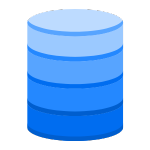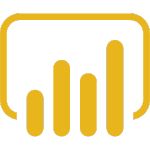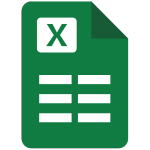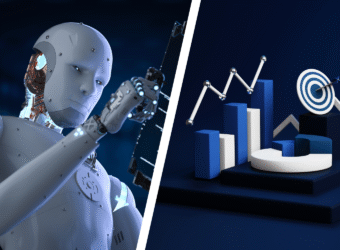Hi, I’m Senky Madhani
a
Web Developer
Data Scientist
Business Analyst
Data Scientist and Business Analyst with a focus on transforming complex data into actionable business strategies. Experienced in leveraging statistical analysis, machine learning, and data visualization to drive informed decision-making.
def succeed(passion, discipline,
focus):
if all([
passion,
discipline,
focus]):
return "You will succeed!"
# Encourage development
return "Work on your skills."
passion = True
discipline = True
focus = True
result = succeed(passion, discipline,
focus)
print(result)
Senky Madhani
I’m a passionate and motivated Data Scientist who believes in balancing hard work with smart strategies. With a strong foundation in tech and analytics, I tackle challenges with focus, creativity, and a solution-driven mindset. Always eager to grow, collaborate, and make a meaningful impact through my work.
In addition to data science, I craft modern, responsive websites that combine clean design with functional user experiences. My goal is to build digital solutions that not only look great but also perform seamlessly. From simple portfolios to full e-commerce websites, I ensure each project is tailored to meet client goals.
Your Trusted Partner
Experience & Expertise
I use the latest technologies and industry best practices to build fast, secure, and user-friendly websites that leave a lasting impact on your business.
Personalized Solutions
I take the time to understand your unique business goals, creating tailored solutions that tackle specific challenges and deliver measurable, impactful results.
Customer Satisfaction
I provide exceptional service with clear, timely communication and a strong commitment to ensuring you feel valued and supported throughout the process.
Competitive Pricing
I offer affordable web development services that deliver exceptional value, helping you achieve your online goals within budget without compromising on quality.
Long-Term Partnership
I see myself as your strategic partner, offering ongoing support and maintenance to keep your website secure, up-to-date, and aligned with your evolving needs.
Skills
Programming
Python
SQL
R
PHP
JavaScript
Data Tools
Power BI
Tableau
Excel
MySQL
GitHub
Web Tools
WordPress
VS Code
Bootstrap
Figma
Chrome DevTools
Services
Web Development
Modern, responsive websites optimized for performance & search engines.
E-Commerce
Online stores with shopping carts, payment gateways, & secure transactions.
SEO Optimization
Increase traffic, and rankings with keyword research & on-page optimization.
Website Maintenance
Ongoing support and maintenance to ensure up-to-date, secure, & optimized websites.
Business Card Development
We create custom business cards that capture your brand and leave a lasting impression.
Creative Template Designs
We design customizable, professional templates to streamline your work and boost branding.
Work Experience

Web Developer
Freelancer
Mumbai, India

Business Analyst Intern
XYZ Company
Dubai, UAE

Data Analyst Intern
RedPluto Analytics PVT
Pune, India
Certificate
Knowledge through certified training. 
➔ Crash Course on Python – Google
➔ Data Science 101 – Skill Up
➔ Data Visualisation – TATA
➔ Data Science Foundations – Great Learning
➔ Network Hacking from Scratch – Udemy
➔ Network Hacking Advance – Udemy
Testimonial
Testimonial
Kishan Sanghani India
I had the opportunity to completely recreate Mr. Akshay Tank’s portfolio website. The goal was to deliver a clean, modern, and responsive design that reflects his personal brand and professional strengths. The project involved a full redesign, optimization for performance, and seamless user experience across devices.
Naresh Amarnaney Canada
I had the opportunity to completely recreate Mr. Akshay Tank’s portfolio website. The goal was to deliver a clean, modern, and responsive design that reflects his personal brand and professional strengths. The project involved a full redesign, optimization for performance, and seamless user experience across devices.
Rajiv India
I had the opportunity to completely recreate Mr. Akshay Tank’s portfolio website. The goal was to deliver a clean, modern, and responsive design that reflects his personal brand and professional strengths. The project involved a full redesign, optimization for performance, and seamless user experience across devices.
Prashant Shah London
I had the opportunity to completely recreate Mr. Akshay Tank’s portfolio website. The goal was to deliver a clean, modern, and responsive design that reflects his personal brand and professional strengths. The project involved a full redesign, optimization for performance, and seamless user experience across devices.
Akshay Tank New Jersey
I had the opportunity to completely recreate Mr. Akshay Tank’s portfolio website. The goal was to deliver a clean, modern, and responsive design that reflects his personal brand and professional strengths. The project involved a full redesign, optimization for performance, and seamless user experience across devices.
Harshit Kothari India
I had the opportunity to completely recreate Mr. Akshay Tank’s portfolio website. The goal was to deliver a clean, modern, and responsive design that reflects his personal brand and professional strengths. The project involved a full redesign, optimization for performance, and seamless user experience across devices.
Manmeet Singh Torronto
I had the opportunity to completely recreate Mr. Akshay Tank’s portfolio website. The goal was to deliver a clean, modern, and responsive design that reflects his personal brand and professional strengths. The project involved a full redesign, optimization for performance, and seamless user experience across devices.
Kishan Sanghani India
I had the opportunity to completely recreate Mr. Akshay Tank’s portfolio website. The goal was to deliver a clean, modern, and responsive design that reflects his personal brand and professional strengths. The project involved a full redesign, optimization for performance, and seamless user experience across devices.
Naresh Amarnaney Canada
I had the opportunity to completely recreate Mr. Akshay Tank’s portfolio website. The goal was to deliver a clean, modern, and responsive design that reflects his personal brand and professional strengths. The project involved a full redesign, optimization for performance, and seamless user experience across devices.
Rajiv India
I had the opportunity to completely recreate Mr. Akshay Tank’s portfolio website. The goal was to deliver a clean, modern, and responsive design that reflects his personal brand and professional strengths. The project involved a full redesign, optimization for performance, and seamless user experience across devices.
Prashant Shah London
I had the opportunity to completely recreate Mr. Akshay Tank’s portfolio website. The goal was to deliver a clean, modern, and responsive design that reflects his personal brand and professional strengths. The project involved a full redesign, optimization for performance, and seamless user experience across devices.
Akshay Tank New Jersey
I had the opportunity to completely recreate Mr. Akshay Tank’s portfolio website. The goal was to deliver a clean, modern, and responsive design that reflects his personal brand and professional strengths. The project involved a full redesign, optimization for performance, and seamless user experience across devices.
Harshit Kothari India
I had the opportunity to completely recreate Mr. Akshay Tank’s portfolio website. The goal was to deliver a clean, modern, and responsive design that reflects his personal brand and professional strengths. The project involved a full redesign, optimization for performance, and seamless user experience across devices.
Manmeet Singh Torronto
I had the opportunity to completely recreate Mr. Akshay Tank’s portfolio website. The goal was to deliver a clean, modern, and responsive design that reflects his personal brand and professional strengths. The project involved a full redesign, optimization for performance, and seamless user experience across devices.
Kishan Sanghani India
I had the opportunity to completely recreate Mr. Akshay Tank’s portfolio website. The goal was to deliver a clean, modern, and responsive design that reflects his personal brand and professional strengths. The project involved a full redesign, optimization for performance, and seamless user experience across devices.
Blog
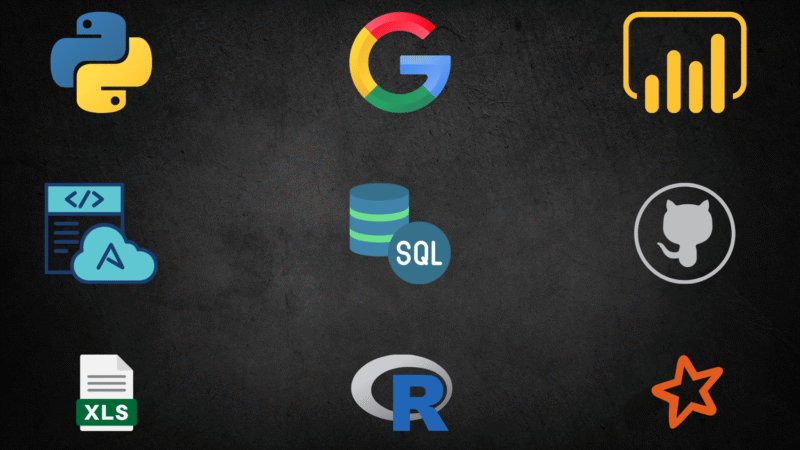
Top 10 Tools Every Data Analyst and Data Scientist Should Know in 2025
As businesses continue to rely more heavily on data-driven decisions, the demand for skilled Data Analysts and Data Scientists is at an all-time high. But with the field constantly evolving, it’s essential to stay ahead of the curve by mastering the tools shaping the future.
Here’s a comprehensive guide to the top 10 tools that every Data Analyst and Data Scientist must know in 2025:
1. Python
- Category: Programming Language
- Used For: Data cleaning, analysis, machine learning, automation, scripting
- Popular Libraries: Pandas, NumPy, scikit-learn, Matplotlib, Seaborn, TensorFlow, PyTorch
- Why It Matters:
Python is the most widely used language in data science. It’s readable, flexible, and has an enormous ecosystem of libraries that simplify everything from simple analysis to complex AI development. Whether you’re automating a report or building a neural network, Python is indispensable.
2. SQL (Structured Query Language)
- Category: Query Language
- Used For: Retrieving, updating, and managing data in relational databases
- Popular Platforms: MySQL, PostgreSQL, MS SQL Server, SQLite, Snowflake
- Why It Matters:
SQL remains the gold standard for querying data. Analysts and scientists alike must extract relevant datasets from massive databases efficiently, and SQL is the most effective way to do it. Mastering joins, window functions, and subqueries can take your analysis to the next level.
3. Microsoft Power BI / Tableau
- Category: Business Intelligence & Data Visualization
- Used For: Dashboards, reporting, storytelling with data
- Why It Matters: Clear communication is crucial in data roles. These tools let you create dynamic dashboards that translate raw numbers into compelling visuals. Power BI is often preferred in Microsoft-based environments, while Tableau is popular in data-heavy industries.
4. R Programming Language
- Category: Statistical Programming
- Used For: Data visualization, hypothesis testing, statistical modeling, data mining
- Popular Libraries: ggplot2, dplyr, caret, Shiny
- Why It Matters: R is designed specifically for statistical computing. It excels in academic and research-focused domains and is loved by statisticians. If your work is statistics-heavy or you’re in domains like healthcare, R is a great asset.
5. Jupyter Notebooks / Google Colab
- Category: Interactive Coding Environment
- Used For: Prototyping, data exploration, documentation, model development
- Why It Matters: Jupyter and Colab allow you to combine code, output, and explanatory text in one place. Colab runs in the cloud (with free GPU/TPU access), making it perfect for deep learning experimentation. These are ideal tools for collaboration and reproducibility in data projects.
6. Apache Spark
- Category: Big Data Framework
- Used For: Distributed data processing, large-scale data analytics, ETL pipelines
- Languages Supported: Python (PySpark), Scala, Java, R
- Why It Matters: With the explosion of big data, Spark is essential for processing data across clusters. It outperforms traditional tools when handling terabytes of data, making it critical for data scientists working in enterprise or streaming environments.
7. Microsoft Excel (Advanced)
- Category: Spreadsheet Tool
- Used For: Data cleaning, quick analysis, financial modeling, pivot tables
- Why It Matters: Excel is still irreplaceable for many analysts. Knowing advanced features like Power Query, macros, pivot tables, and complex formulas allows quick data manipulation—especially in corporate environments where Excel remains a staple.
8. Git & GitHub
- Category: Version Control
- Used For: Tracking code changes, collaboration, open-source contribution
- Why It Matters: Version control is non-negotiable in data science. Git helps track your code history and collaborate without conflicts. GitHub allows teams to manage projects and contribute to open-source repositories.
9. Apache Airflow
- Category: Workflow Automation
- Used For: Orchestrating data pipelines, ETL processes, task scheduling
- Why It Matters: As you scale up, automating your workflows becomes necessary. Airflow lets you define and monitor complex pipelines using Python. It’s widely used in production environments to manage recurring data tasks efficiently.
10. Cloud Platforms (AWS, Google Cloud, Azure)
- Category: Cloud Computing
- Used For: Scalable storage, ML model deployment, real-time data analytics
- Why It Matters: Cloud knowledge is now a must. These platforms offer powerful services like AWS SageMaker, GCP BigQuery, and Azure Machine Learning. They enable scalable, secure, and flexible computing environments—essential for real-world data applications.
Final Thoughts
In 2025, being a successful Data Analyst or Data Scientist requires more than just knowing how to analyze data. You need a modern toolset that spans programming, visualization, cloud, and automation. Start with the essentials—Python, SQL, and Power BI—and gradually build expertise in more advanced tools like Spark, Airflow, and cloud platforms.
The more tools you master, the more valuable you become.

How to Transition from Data Analyst to Data Scientist: A Step-by-Step Guide
The journey from Data Analyst to Data Scientist is both exciting and rewarding. While analysts focus on describing and visualizing past data, data scientists build predictive models and uncover deeper patterns using advanced tools. This transition requires more than just learning machine learning — it involves upgrading your mindset, skillset, and portfolio.
Whether you’re currently in a data analyst role or planning the move, here’s a structured path to help you become a successful Data Scientist.
Understand the Key Differences:
| Aspect | Data Analyst | Data Scientist |
| Focus | Describe and visualize data | Predict and prescribe with models |
| Tools | Excel, SQL, Power BI, Tableau | Python, R, ML libraries, cloud platforms |
| Outputs | Reports, dashboards | Models, predictions, data-driven products |
“The goal is to turn data into information, and information into insight.”
Learn Programming (Python or R):
To build models or automate tasks, you need to be confident in coding. Python is widely used due to its flexibility and rich libraries for data science.
Start with these libraries:
- Pandas: Pandas is the cornerstone of data manipulation in Python. It provides easy-to-use data structures like DataFrames, which allow you to clean, reshape, and manipulate data with minimal effort. Mastering Pandas will make you proficient at handling missing data, merging datasets, and transforming data in preparation for analysis and modeling.
- NumPy: NumPy is essential for performing numerical computations and handling arrays or matrices of data. It provides an efficient way to work with large datasets, enabling operations like element-wise calculations, linear algebra, and random number generation. As a Data Scientist, NumPy will be your go-to tool for handling complex mathematical operations.
- Matplotlib / Seaborn: Matplotlib and Seaborn are powerful libraries for creating visualizations in Python. Matplotlib provides a wide variety of plots and charts, while Seaborn builds on it to offer more advanced statistical visualizations. Learning these libraries will enable you to communicate your findings effectively through visual means, helping you understand trends, distributions, and patterns within the data.
- Scikit-learn: Scikit-learn is one of the most popular libraries for machine learning in Python. It provides simple and efficient tools for data mining and machine learning, including algorithms for classification, regression, and clustering. Whether you’re working on supervised or unsupervised learning tasks, Scikit-learn offers a wide range of algorithms and utilities for model evaluation, feature selection, and hyperparameter tuning.
“Python is a programming language that lets you work quickly and integrate systems more effectively.”
Build a Strong Foundation in Statistics:
- Confidence intervals: Learn how to estimate the range within which a population parameter lies, with a certain level of confidence. This is crucial for making predictions and understanding data uncertainty.
- Probability distributions: Understand how data behaves by studying normal, binomial, and Poisson distributions. This helps in making assumptions about the likelihood of outcomes and forming statistical models.
- Hypothesis testing: Master the process of making assumptions about a dataset, then testing those assumptions using t-tests, Chi-square tests, and ANOVA. This helps in confirming or rejecting hypotheses based on data.
- Linear regression: Learn to model relationships between variables using linear regression. This foundational technique helps predict continuous outcomes and forms the basis of many machine learning algorithms.
- Central tendency and variability: Understand key concepts such as mean, median, mode, variance, and standard deviation. These are used to summarize data and understand its distribution, which is crucial for data analysis and modeling.
“To consult the statistician after the experiment is done is often as naive as to consult the doctor after the patient has died.”
Understand Machine Learning Basics:
- Naive Bayes: A simple yet powerful algorithm based on Bayes’ Theorem, typically used for classification tasks. It assumes that the features are independent (hence “naive”) and works well for problems like spam detection and sentiment analysis.
- Linear & Logistic Regression: These are foundational algorithms in machine learning. Linear regression is used for predicting continuous values (e.g., house prices), while logistic regression is used for binary classification tasks (e.g., determining whether an email is spam or not).
- Decision Trees & Random Forest: Decision trees model data by creating a tree-like structure of decisions. Random Forest is an ensemble method that combines multiple decision trees to improve accuracy and reduce overfitting, making it ideal for both classification and regression tasks.
- K-Nearest Neighbors (KNN): A simple and effective instance-based learning algorithm used for classification. KNN works by classifying data points based on their similarity to neighboring data points. It’s easy to implement and useful for small datasets.
- Clustering (K-Means): An unsupervised learning technique where the goal is to group similar data points together into clusters. K-Means is a popular algorithm for this, often used in customer segmentation, image compression, and anomaly detection.
“Machine learning is the field of study that gives computers the ability to learn without being explicitly programmed.”
Create a Portfolio of Projects:
- A GitHub repository with clean code: Hosting your code on GitHub is essential. Ensure that your repositories are well-organized, with clear comments, documentation, and README files explaining the project. Potential employers or collaborators can evaluate your coding practices and understanding of version control.
- Case studies with business context: Projects should be framed within business context. Clearly explain the problem you’re solving, the dataset you’re using, and the insights or models you’ve developed. Case studies will demonstrate that you can bridge the gap between technical work and its application to business challenges.
- Jupyter Notebooks or Streamlit apps: Jupyter Notebooks are an excellent tool for presenting your work in a readable format, especially for showcasing data analysis, visualizations, and model building. You can also use Streamlit to build interactive web applications that make your models accessible and user-friendly, making your portfolio more dynamic and engaging.
- Blog posts explaining your projects: Writing blog posts about your projects is a great way to communicate your thought process and your approach to problem-solving. Explain the challenges you faced, the methods you used, and the results. This not only demonstrates your ability to document your work but also helps others in the community understand and learn from your projects.
“Data science is a way of thinking about data as a tool to solve problems. A project is an opportunity to turn those insights into actions.”
Take Certifications or Online Courses:
- Coursera (e.g., IBM Data Science, Andrew Ng ML)
- Udemy (Python, Data Science Bootcamps)
- edX (HarvardX Data Science, MITx Analytics)
- DataCamp (hands-on coding practice)
“Online courses provide a bridge between knowledge and action, giving you the tools to turn learning into tangible success.”
Learn Cloud and Big Data Basics:
- AWS (S3, SageMaker) or Google Cloud (BigQuery):
- Amazon Web Services (AWS) and Google Cloud offer powerful cloud solutions for storing, processing, and analyzing data.
- AWS S3 is widely used for scalable object storage, allowing you to store vast amounts of unstructured data, while AWS SageMaker provides a fully managed environment for building, training, and deploying machine learning models.
- Google Cloud’s BigQuery is a highly scalable data warehouse solution that is particularly useful for running complex queries on large datasets in real time. Both cloud platforms provide comprehensive services for data scientists to work with big data efficiently.
- Databricks and Apache Spark: Databricks is an analytics platform that integrates with Apache Spark to process large datasets quickly and efficiently. Apache Spark is an open-source distributed computing framework that allows for high-speed data processing and machine learning. With Databricks, you can easily set up Apache Spark clusters for large-scale data analysis, making it ideal for big data projects and real-time analytics.
- Docker for environment management: Docker helps with managing development environments. It allows you to create containerized applications that can be run anywhere, ensuring consistency across different environments. As a Data Scientist, Docker can be used to package your data science models, ensuring that they work seamlessly across development, testing, and production environments without compatibility issues.
- Airflow for data pipelines: Apache Airflow is an open-source tool that allows you to automate and schedule workflows. As a Data Scientist, you’ll often need to build complex data pipelines for data processing, cleaning, and model deployment. Airflow helps you to manage these workflows efficiently, ensuring that data flows smoothly from one process to another, without manual intervention. It is particularly useful when working with large datasets and automating machine learning workflows.
Final Thoughts:
Becoming a Data Scientist is less about a job title and more about the way you think, analyze, and build solutions using data. Your experience as a Data Analyst already gives you an edge — now it’s time to expand your capabilities and think like a scientist.
“Without data, you’re just another person with an opinion.”
— W. Edwards Deming
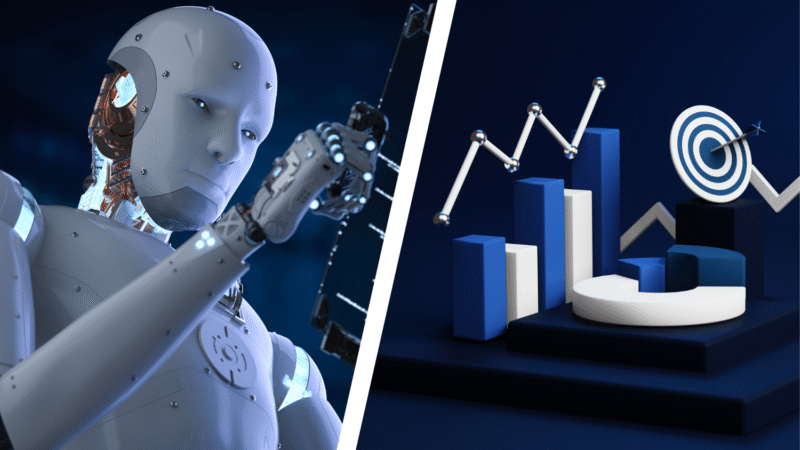
Data Scientist or Data Analyst: Which Career Path is Right for Your future?
In today’s data-driven world, both Data Analysts and Data Scientists play critical roles—but their responsibilities, skill sets, and career trajectories are distinctly different. While Data Analysts focus on interpreting historical data to uncover trends and support business decisions, Data Scientists use advanced techniques like machine learning and predictive modeling to solve complex problems and forecast future outcomes. This blog explores the core differences between these two in-demand roles and helps you decide which career path aligns best with your goals and interests.

What is a Data Analyst?
A Data Analyst focuses on collecting, cleaning, analyzing, and visualizing structured data to help businesses make informed decisions. They identify trends, generate reports, and support day-to-day strategic operations using tools like Excel, SQL, Power BI, and Tableau. Their work is mostly descriptive, dealing with historical data to uncover actionable insights.
“Numbers have an important story to tell. They rely on you to give them a clear and convincing voice.”
— Stephen Few
What is a Data Scientist?
A Data Scientist goes beyond analysis to build predictive models using machine learning and advanced statistical techniques. They work with both structured and unstructured data, develop algorithms, and solve complex problems using tools like Python, R, TensorFlow, and cloud platforms. Their focus is on creating intelligent systems that can predict outcomes and automate decisions.
“A data scientist is someone who is better at statistics than any software engineer and better at software engineering than any statistician.”
— Josh Wills
Key Differences: Data Analyst vs. Data Scientist
| Feature | Data Analyst | Data Scientist |
| Focus | Descriptive analytics | Predictive & prescriptive analytics |
| Data Type | Structured data | Structured + Unstructured data |
| Primary Tools | Excel, SQL, BI tools | Python, R, ML libraries, Big Data tools |
| Programming Skills | Moderate | Advanced |
| Math & Stats | Basic to intermediate | Strong foundation |
| Outcomes | Reports, dashboards | ML models, predictions |
“The goal is to turn data into information, and information into insight.”
— Carly Fiorina
Which One Should You Choose?
- Choose Data Analyst if you:
- Prefer working with business data and visualization
- Have a background in business, commerce, or statistics
- Enjoy descriptive analysis and supporting decisions
2. Choose Data Scientist if you:
- Enjoy working on complex, technical challenges
- Are strong in coding and mathematics
- Want to build predictive models and AI solutions
Final Thoughts
Both roles are vital in the data ecosystem. Data Analysts lay the groundwork for insights, while Data Scientists build on that foundation to drive automation and predictive intelligence. Your choice depends on your interests, strengths, and career goals. Whichever path you choose, the demand for data skills is only growing—so now is the perfect time to invest in your data career.
Get in Touch

Senky Madhani
CEO - Inovative Web Minds
1. I'm always ready and excited to explore new projects, roles, and creative challenges.
2. Let’s turn great ideas into reality together through meaningful, productive teamwork.
